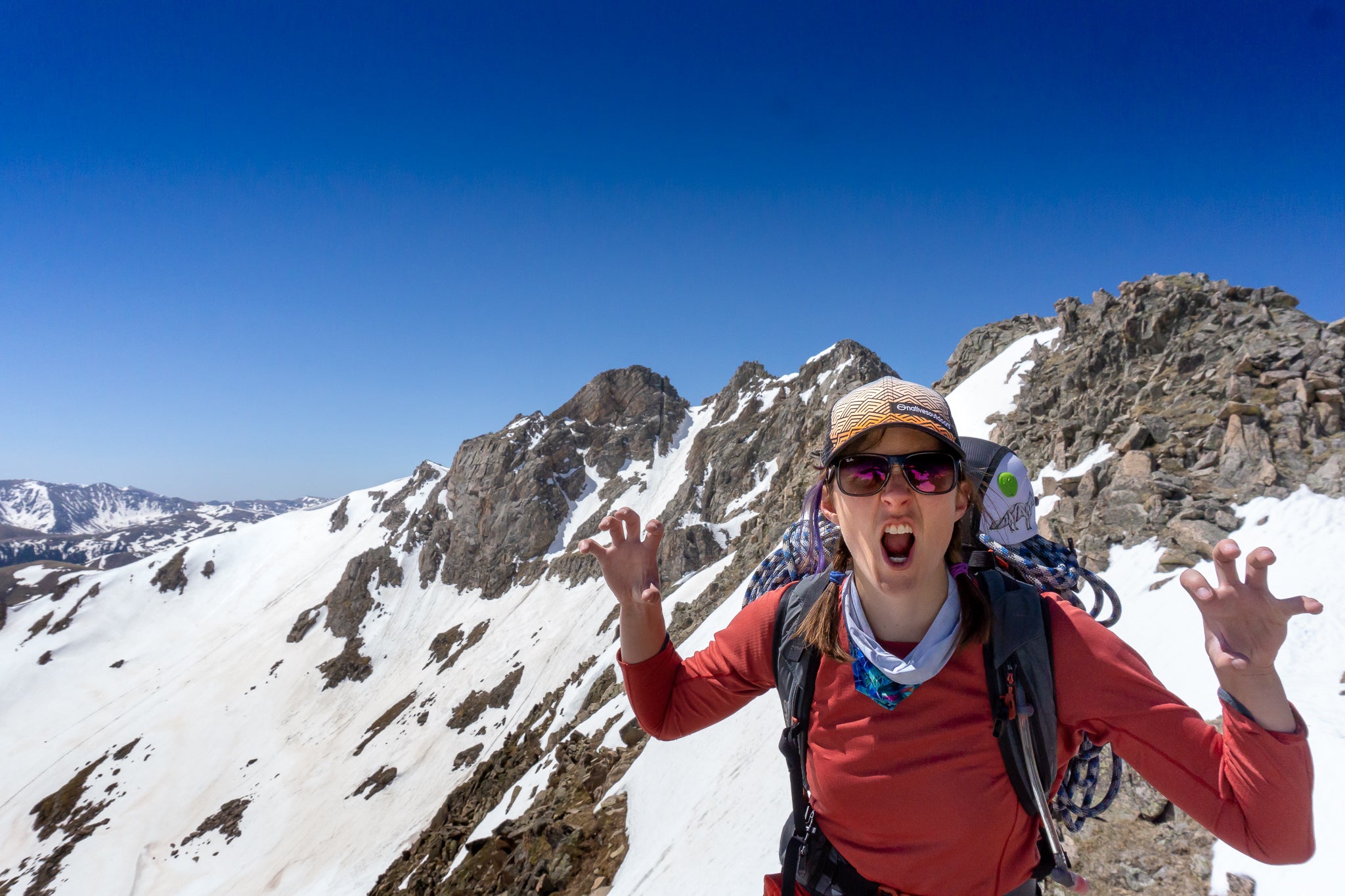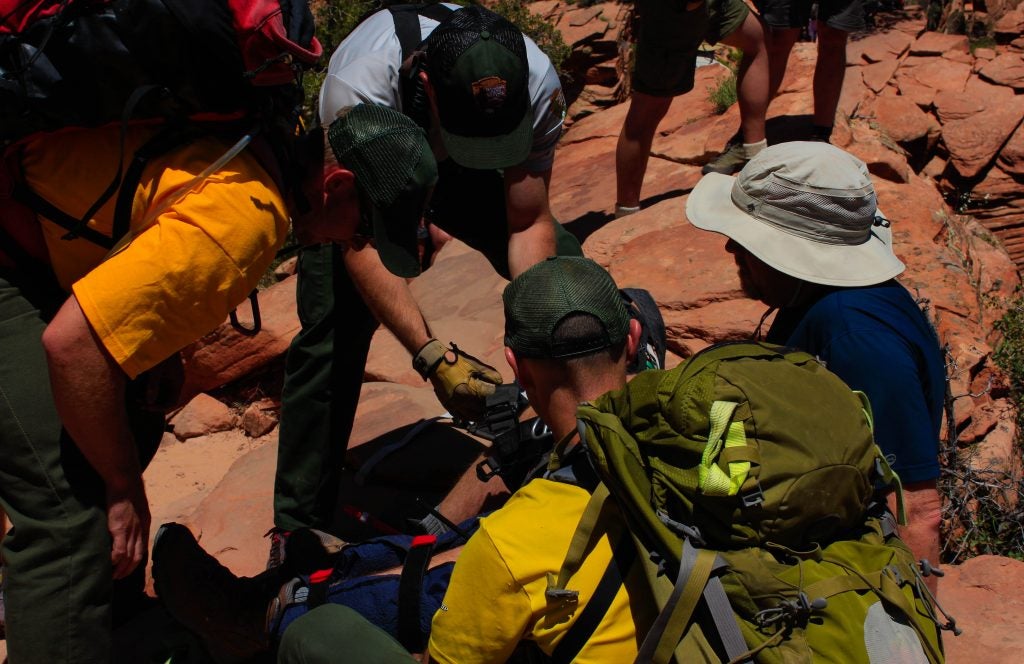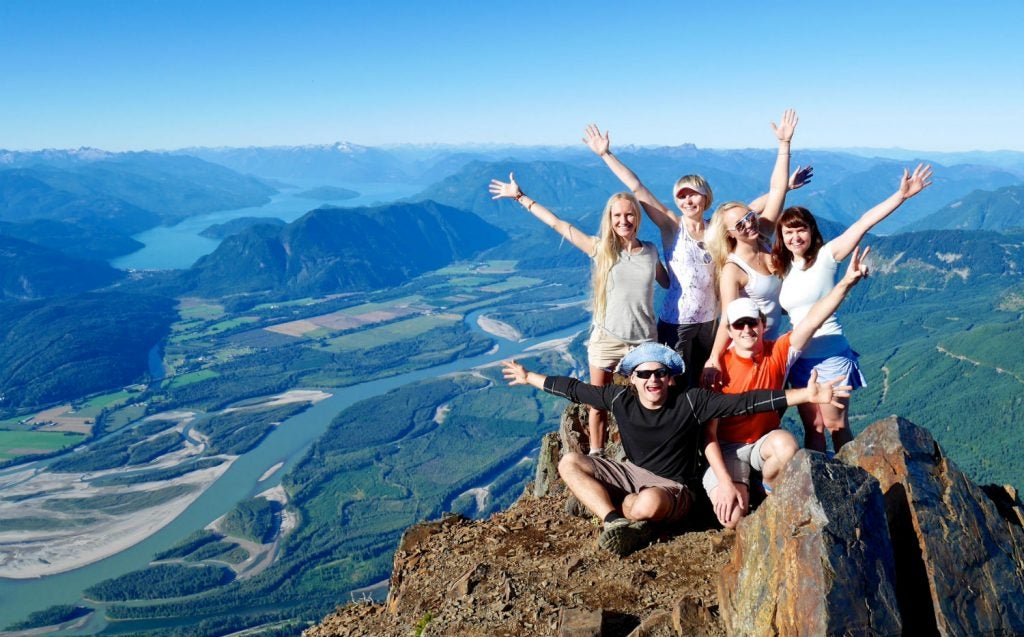When it comes to backpacking, knowledge is power — but experience is the greatest teacher. I wasn’t always a backcountry expert. In fact, I learned a lot of lessons the hard way.
I’ve been an adventure-addict most of my life, and I’ve spent nearly every week for the past five years hiking, backpacking and climbing outside.
So I figured it was time to put all that random knowledge to good use, and share my backpacking tips with fellow “lady dirtbags,” or anyone who’s looking to spend more time outside. Through The Lady Dirtbag’s Guide to Freedom, I hope to empower others who identify as women to have the confidence to go outside and find an adventure. This book covers everything from how to plan the perfect backpacking itinerary to how to go number two in a harness (truly an art).
But the truth is, I learned most of these valuable lessons by doing the wrong things many, many times. Mistakes are a great learning tool. And as long as no one gets seriously injured, they can also turn into pretty entertaining stories.
Here are some of my fails, and the backpacking tips I learned from them. Hopefully you can learn something here, too.
Walk Your Paws Off
Who doesn’t love backpacking with their four-legged friend? I took my adventure pup, Nina, on a segment of the Colorado Trail, a 486-mile trail that stretches from Denver to Durango. The trail was a steady downhill over rough granite-laden dirt for over four miles.
When we arrived at camp, I was disappointed to see a dirt road stuffed with car campers nearby. I had walked in the wilderness all day only to end up in civilization. My partner and I started camp chores while Nina set to licking her paws. The next morning, we discovered that Nina had chewed the skin on her paws straight off.
She was unable to walk more than a couple of steps, so my partner and I made the decision to split up. He would hike out to our vehicle, and I would wait by the road. Several hours later I heard the truck pull up. I had never been so happy to camp near a road. Nina made a full recovery four days later.
Tip: Always bring paw protection for your pet. Salves, like Musher’s Secret, work great in the summer too! Wax paws every few hours. Always carry an emergency first aid kit with enough gauze to wrap up your pooch’s paws. And if you’re unfamiliar with how you pooch will handle rough terrain, don’t venture too far. While I prefer the solitude of the backcountry, I’m grateful we wound up in a more accessible campground on this trip.
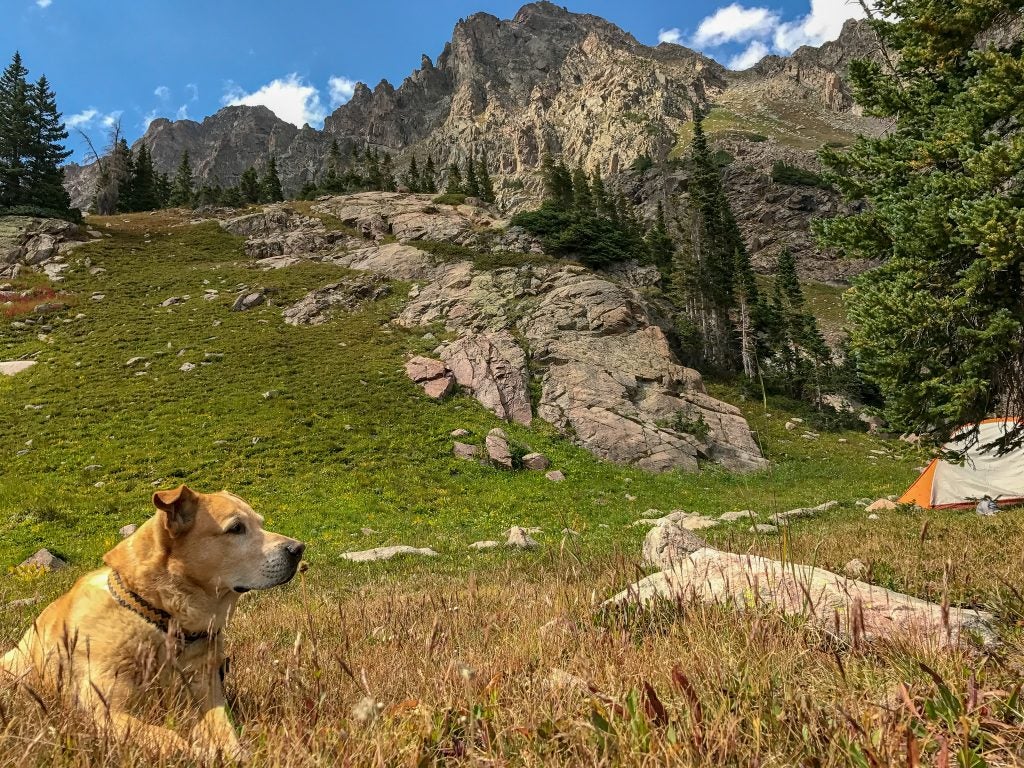
Treat your dog’s feet just as well as you treat yours on the trail. Photo by Meg Atteberry.
The Botched Selfie
My partner and I decided to set up a base camp in a remote wilderness area and spend a long, holiday weekend scrambling peaks and enjoying the views. We awoke before dawn to make it up an unnamed peak. The route gave an breezy sensation of flying among the rocks.
There wasn’t a lot of space on the summit. As my partner stepped around me, he twisted his knee. Yelping in agony, he slowly made his way back down to camp. We made the decision to rest his leg for the remainder of the day and hike out the next morning.
We awoke at first light, packed up camp, and made the 12-mile death march over the fallen trees of the unmaintained trail. To top it all off, I had come down with a nasty migraine. Somehow, we stumbled back to the car in one piece.
Tip: Accidents happen. We felt we could make it back to the trailhead without calling for rescue. It was an ugly day, but we had an emergency beacon as a backup in case my partner couldn’t make it. Even though we didn’t use it, I’m so glad we had it.
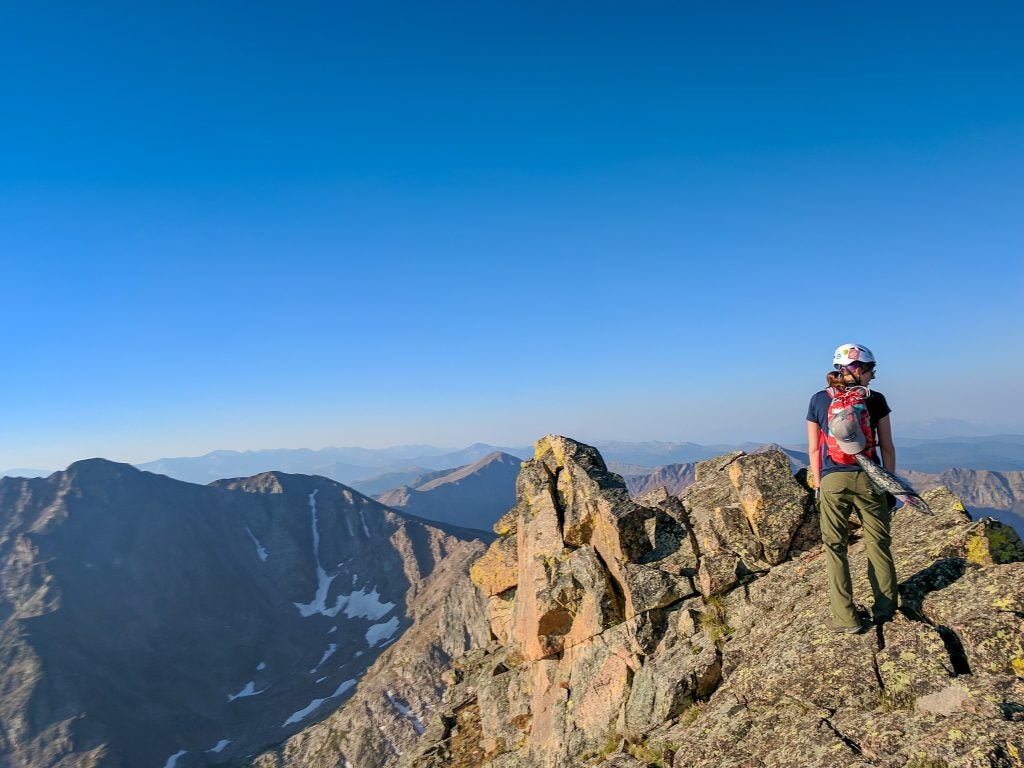
Always take care when scrambling rocks. Be prepared if someone does get hurt. Photo by Meg Atteberry
Altitude Sickness in the Himalayas
Ever since I was 10 years old I’d dreamed of laying eyes on Mount Everest. For my 30th birthday, I bought myself a ticket to Nepal. We opted to trek to Gokyo Ri, a 17,775-foot mountain near Mount Everest. It’s an 11-day journey that starts just over 9,300 feet.
We awoke before dawn on our “summit day.” The thermometer tacked to the side of the tiny building we slept in read negative 14-degrees. I had been feeling the effects of altitude for about a day now, but it hadn’t been anything alarming. When I watched the sun rise over Mount Everest, I fell to my knees in awe of the epic beauty around me.
After enjoying a windless summit with epic views, we began our descent. That’s when I noticed extreme nausea. My head started to ache as we returned back to the tiny village at the base of the mountain. I felt like I could hardly keep my head up and my food down.
Suddenly, I realized that I had Acute Mountain Sickness (AMS) and I needed to descend. My partner and our guide quickly gathered our things and we set back out on the trail. We hiked for over 12 hours that day and I descended nearly 6,000 feet. When we finally reached the lower village, I felt like a million bucks.
Tip: Understand your body and listen to what it needs while hiking at altitude. Remember, in order to alleviate the symptoms of AMS you need to get to lower elevations.
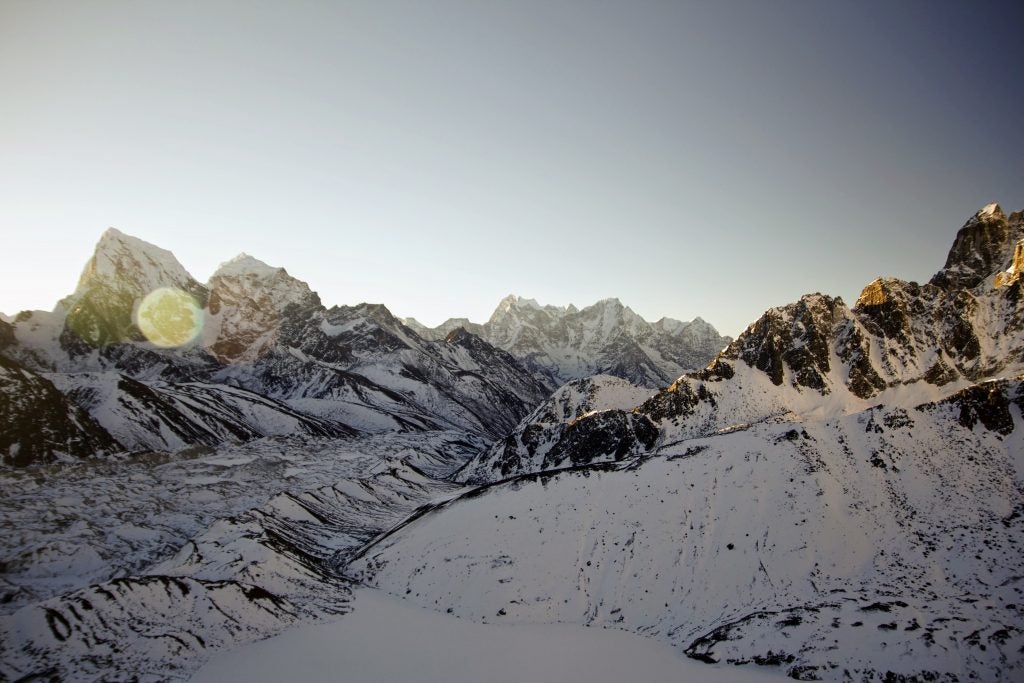
Know your limits and remember, the mountains will always be there. Photo by Meg Atteberry.
Lost in the Mud in Colombia
My brother, boyfriend and I went backpacking in Tayrona National Park, Colombia. The plan was to trek through the jungle to a beach campsite where we could swim, relax and sleep in hammocks for the night.
Our research suggested that the trail leading from the park entrance to the campsite was well-maintained and quite popular. We figured there was no way we could get lost. Well, that proved to be a poor assumption on our part. About halfway to our destination, the trail became a mud-laden network of footpaths.
As we squished our way through mud up to our knees, we quickly became disoriented in the dense vegetation of the jungle. All of the people faded away. Quickly, we realized that we were lost. Without a compass or map, I tried to load our location on my GPS. There was no signal that could penetrate the claustrophobic forest. But then, I heard the ocean. Using the ocean to orient us, we found our way back to the trail.
Tip: You can’t always rely on your phone. Sometimes you need to use unconventional ways to navigate. In this case, we used sound to get us back on track, but it’s a good idea to learn some orienteering skills so you can properly use a compass to navigate, too.
A Meeting with Mr. Goatsworth
My friends and I were enjoying a climb up one of Colorado’s lesser-known 13ers (13,000-foot peak). When we reached the summit we were all smiles, enjoying a perfect summer day in the mountains. The summit was small, just enough room for the four of us.
Out of nowhere, an inquisitive mountain goat appeared. He kept moving towards us at a quick pace. There certainly wasn’t room for all of us on the summit. His avid curiosity scared us and we scurried off as quickly as possible.
Tip: It turns out that mountain goats are very habituated to people (they are after your food and pee – they love the salt). Keep wildlife wild by respecting its space and do not feed any animals.
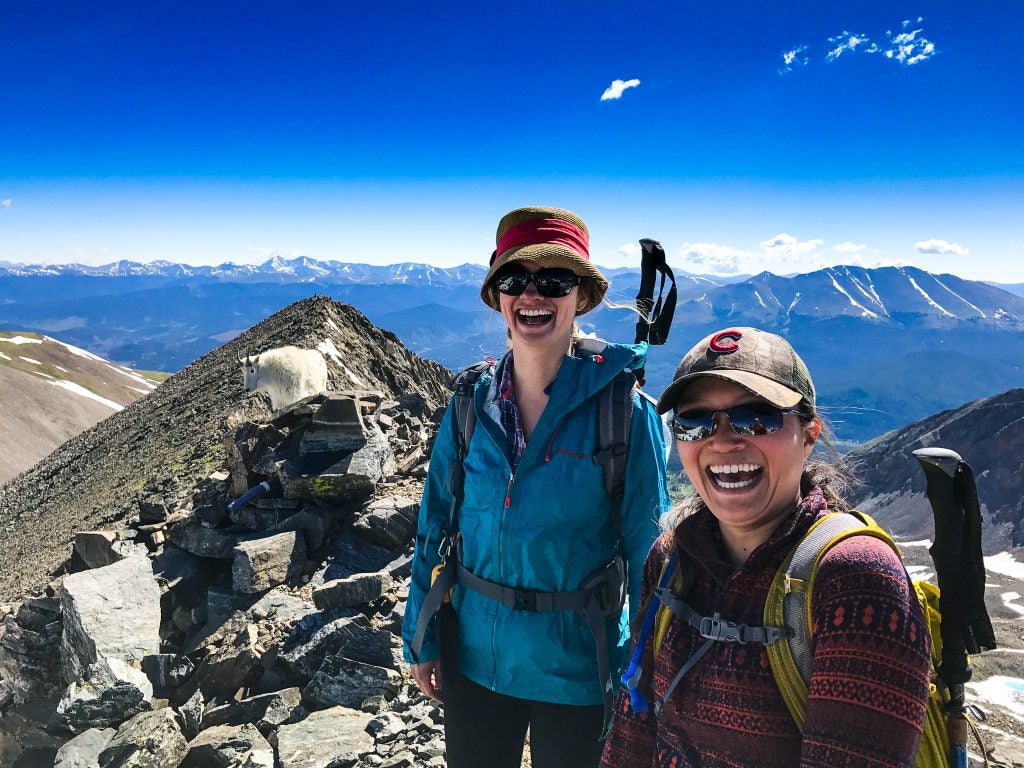
We were surprised to be approached by a mountain goat on this narrow summit. We scooted away as quickly as possible! Photo by Meg Atteberry
When Hanger Strikes
Recently, I went on a winter climb outside of Breckenridge. We’d waited all season for the right conditions. The route was around eight miles with over a mile of ridgeline. Navigating ridges and avalanche terrain all day takes its toll on your energy levels. I had accidentally packed less food that I usually would for a climb like this.
By the time we were on the final push of the descent, I was beyond starving. Stubborn and determined to get out of the wind, I kept on trudging until I reached the base of the mountain. There was one lone slice of pizza left in my bag. It took longer than expected to reach my snacking destination and by the time I got to the base of the climb, I was ready to rage war on anyone who got between me and my slice.
In a hurried, angry panic I set to stuffing my face so fast I got the hiccups. My hanger had taken hold and I continued to barbarically slam my slice while onlooking hikers tried to ignore my gross, noisy noshing.
Tip: Listen to your body. Always bring more than enough food, even on a day hike. Avoid bonking (a mountaineering term for getting sluggish, irritable, and hungry) on the trail by having a nibble of something on the first onset of hunger.
Although all of these stories have a few scary moments, they all provided me with valuable wilderness lessons and other backpacking tips. The more you learn and get outdoors, the more prepared you will be to face nature’s challenges.
Related Campgrounds:
- Dillon Reservoir Camping, Dillon, CO.
Popular Articles:
Articles on The Dyrt Magazine may contain links to affiliate websites. The Dyrt receives an affiliate commission for any purchases made by using such links at no additional cost to you the consumer.

